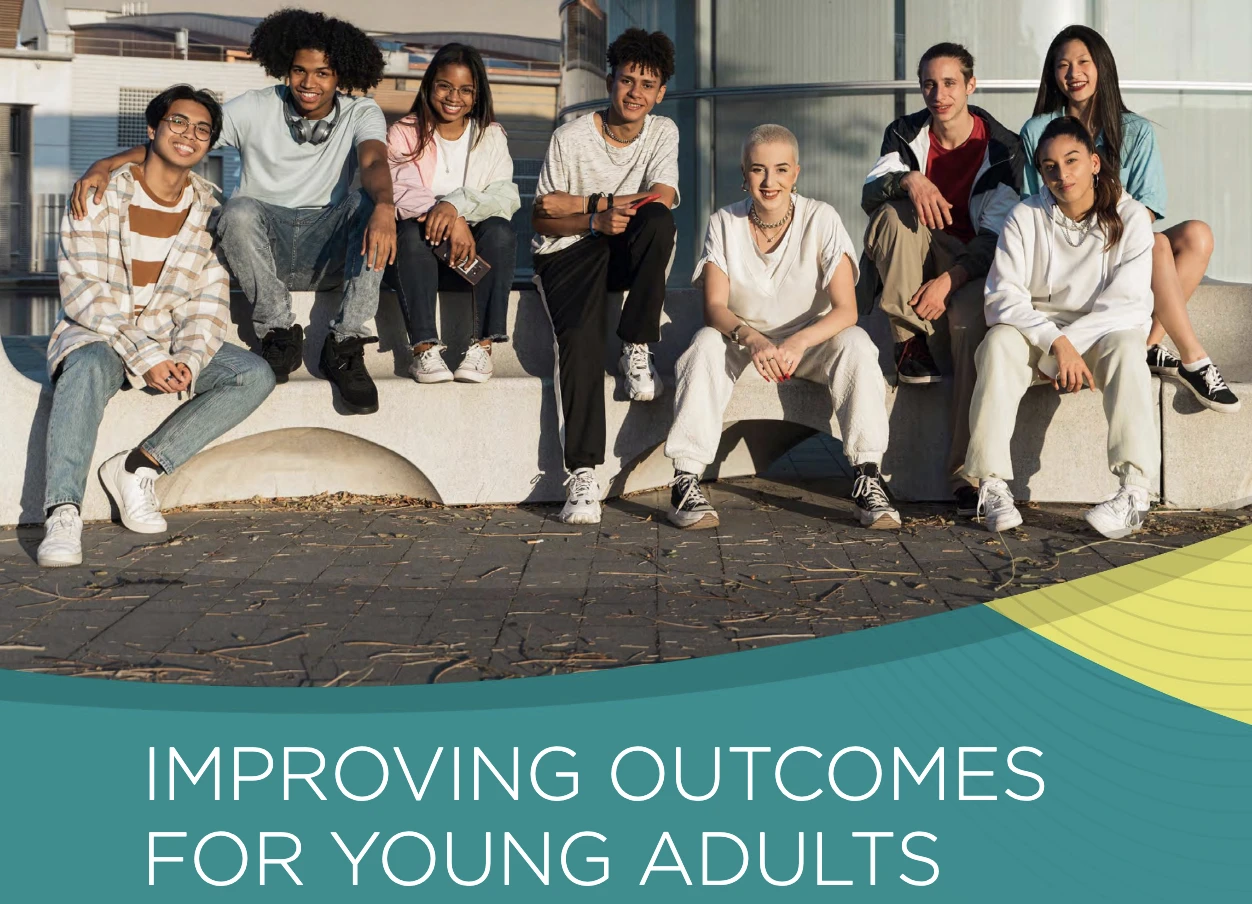Want to improve outcomes for young adults leaving foster care? Here’s the playbook…
Despite some advances in support, young people who leave foster care at 18 continue to face critical challenges, including barriers to stable housing, access to basic assistance, opportunities for quality jobs and consistent educational support.
In 2023, the National Collaborative for Transition-Age Youth was formed by three leading organizations involved in helping young adults who experienced foster care — American Public Human Services Association, FosterClub and Youth Villages.
Its first project: Improving Outcomes for Young Adults and the Systems that Serve Them: A Playbook of Best Practices has just been released. Co-designed with young people with lived experience in foster care, the playbook is a road map for child welfare agencies, policymakers and advocates who are committed to improving outcomes for young people who turn 18 in foster care.
Key features include:
- 12 lived expert-defined core principles (e.g., trust, choice, permanency, empowerment)
- 35 targeted policy and practice recommendations
- Nearly 100 examples of innovative practices
- Tools for implementation and accountability
- Specific calls to action for public sector leaders
“We hope the playbook empowers practical improvements in support,” said Shaquita Ogletree, federal policy director at Youth Villages. “It is a sharing of solutions that can be implemented across the nation to enhance outcomes for young people served by child welfare systems.”
An important section of the playbook focuses on the need to expand high-quality, federally reimbursable extended foster care (EFC). Experts, including individuals with lived experience, have repeatedly named expanding and improving EFC as critical to improving outcomes for young people moving to adulthood.
Each additional year in EFC after age 18:
- Increases the probability of completing a high school credential by about 8%
- Increases the expected probability of enrolling in college by 5% to 12%
- Increases the time employed between ages 21 and 23 by about 1.5 months
- Increases total earnings between ages 21 and 23 by about $2,300–$3,200
- Increases the amount of money in their bank accounts by about $650
- Increases the odds of feeling they have enough people to turn to for emotional support, tangible support and advice/guidance
- Decreases the odds of being food insecure in the past 12 months by about 21%
- Decreases the odds of a recent arrest by about 28%
- Decreases the odds of being homeless or couch-surfing between ages 21 and 23 by about 19%
“Extended foster care is such an incredibly important option to support the successful transitions to adulthood of young people exiting the foster care system in Texas,” said Todd Serpico, division administrator of transitional living services for the Texas Department of Family and Protective Services. “In Texas, not only do we provide extended foster care for young adults up to 21 (or in some cases 22), we [also] have been working hard to increase participation rates and length of stay as we help these young people build the foundations for successful futures and are beginning to see the positive impact of these supports.”
The National Collaborative had six virtual meetings and two in-person sessions to gather insight from young people and others who joined the effort. The group reviewed current best practices and model standards of care that address the unique needs of this population. The process included an analysis of data, feedback sessions and collective learning. The resulting playbook is a framework for improving outcomes across multiple domains — housing, health, education, employment, permanency, and more.
“[This was a] collaboration between lived experts and people in child welfare,” said Dina Santos, who spent three years in Florida foster care. “[All of us] coming together and sharing our ideas and different perspectives with each other – not just on a local level, but on a national level.” Young people’s insights helped shape the playbook’s structure, themes and recommendations. Their role was central in:
- Defining the core principles that should guide all policies and practices affecting engagement and service delivery with older youth and young adults.
- Providing firsthand accounts and recommendations to ensure the playbook reflects the challenges and strengths of young people.
- Informing the development of practical tools and resources that are accessible and youth centered.
- Challenging outdated policies and advocating for opportunity, shared power and choice in service delivery.
The voices of young people who participate in the National Collaborative or who have important insight are included in every section of the playbook.
“[The playbook is about] ensuring that the people who are now in the foster care system or who are transition(ing) out are getting a better experience than the ones before them,” said Shayne McRae, who spent six years in Kansas foster care.
Each section of the playbook focuses on a fundamental area of support for young people moving through the child welfare system, such as employment, housing, permanency and health.
The playbook concludes with eight overarching priorities for state and federal elected officials and policymakers.
- Co-design systems and programs centered on shared power with young people.
- Prioritize prevention services for older youth.
- Increase John H. Chafee Foster Care Program funding.
- Expand Medicaid eligibility and support through age 26.
- Invest in affordable housing and flexible housing assistance.
- Promote interagency collaboration.
- Create flexible funding mechanisms.
- Maximize Title IV-E Extended Foster Care.
For more information about the playbook and the National Collaborative for Transition-Age Youth, contact: Shaquita Ogletree.

